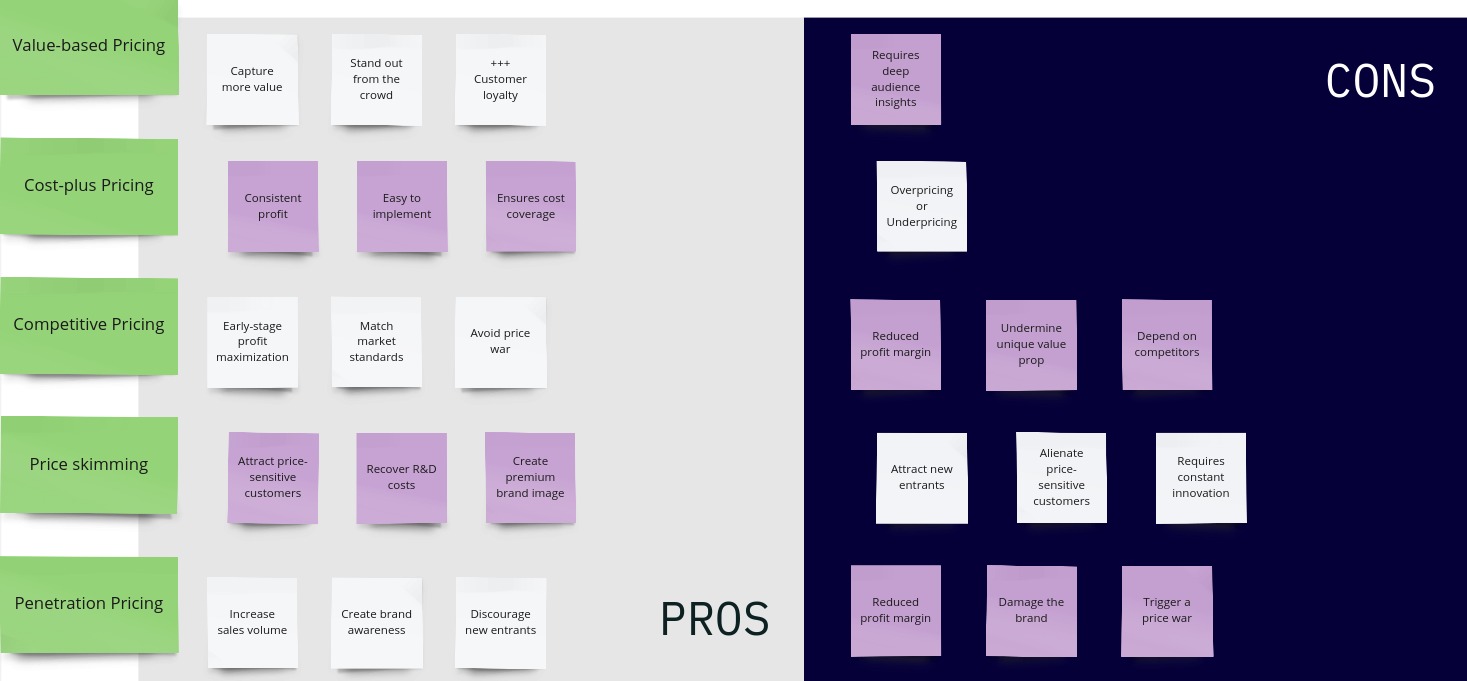There are different strategies that enterprises can use to set the optimal price for their products or services. But first, they need to consider their goals, costs, and market conditions. Let’s explore some time-tested pricing strategies:
Value-based Pricing Strategy
This strategy determines the price based on the perceived value of the product or service. The focus is on the customer’s perception rather than the cost of production or the competition’s price. This strategy can help enterprises capture more value, differentiate themselves from competitors, and build customer loyalty. However, it requires a deep understanding of the customer’s needs, preferences, and willingness to pay.
Cost-plus Pricing
Some leaders set a desired fixed percentage or profit to the cost of production. This strategy is simple, easy to implement, and ensures that the enterprise covers its costs and earns a consistent profit. However, the cost-plus strategy ignores the customer’s perception of value and the market demand, usually resulting in overpricing or underpricing.
Competitive Pricing Strategy
By setting the price based on what the competitors charge for similar products or services, you play it safe. This strategy can help enterprises attract price-sensitive customers, match the market standards, and avoid price wars. But the disadvantages are severe. It may reduce the profit margin, undermine the unique value proposition, and create a dependency on the competitors’ actions.
Price Skimming
This strategy involves setting a high price for a new or innovative product or service when the demand is high and the competition is low and then gradually lowering the price as the market becomes more saturated and competitive. This way enterprises can maximize their profits in the early stages of the product life cycle, recover their research and development costs, and create a premium brand image. However, it may attract new entrants, alienate price-sensitive customers, and require constant innovation to sustain the high price.
Penetration Pricing Strategy
When companies set a low price for their products and services to enter a competitive market they quickly gain a large market share. This strategy can help enterprises increase sales volume, create brand awareness, and discourage new entrants. However, it may reduce the profit margin, damage the brand image, and trigger a price war.

These are some of the best pricing strategies for enterprises. Don’t forget to consider factors, such as the product or service quality, the target market segment, the distribution channel, and the promotional strategy.
Before setting the price, conduct a thorough pricing analysis and test different pricing methods to find the optimal one for your business.

